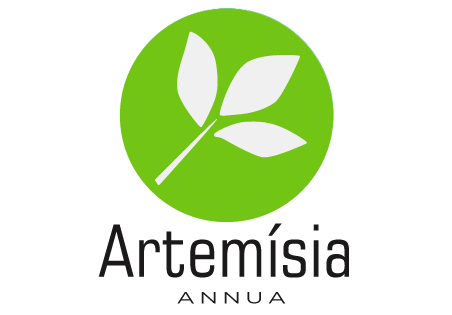THÉRAPEUTIQUES PROMETTEUSES POUR LE TRAITEMENT DU CANCER

Le cancer et le paludisme sont des problèmes de santé majeurs dans le monde malgré les nombreuses stratégies et thérapies disponibles pour leur traitement. La stratégie la plus utilisée pour le traitement de ces maladies est l'administration de médicaments thérapeutiques, qui souffrent de plusieurs lacunes. Certaines des limitations pharmacologiques associées à ces médicaments sont la multirésistance aux médicaments, la toxicité des médicaments, une biocompatibilité et une biodisponibilité médiocres et une faible solubilité dans l'eau. Les études précliniques actuellement en cours ont démontré que la thérapie combinée est une approche puissante qui peut surmonter certaines des limitations susmentionnées. Il a été rapporté que l'artémisinine et ses dérivés présentent une efficacité puissante en tant qu'agents anticancéreux et antipaludiques. Cette revue rapporte des composés hybrides contenant des échafaudages d'artémisinine et leurs dérivés avec des effets thérapeutiques prometteurs pour le traitement du cancer et du paludisme.
Le cancer est également une maladie chronique, et son fardeau continue de croître à l'échelle mondiale, perturbant les systèmes de santé, les familles, les communautés, etc. En 2018, 18 millions de nouveaux cas et 9,6 millions de décès liés au cancer ont été signalés. Une augmentation de 1,2 million de cas de cancer et de 400 000 décès entre 2018 et 2020 a été estimée à l'aide de la base de données GLOBACAN en 2021. Plus de 5 à 10 % des cas de cancer auraient été transmis via des gènes héréditaires, tandis que 90 à 95 % des cas de cancer auraient été causée par une mutation génétique.
Les agents anticancéreux actuellement utilisés souffrent d'une résistance aux médicaments et d'une faible spécificité, ce qui entraîne certains effets secondaires indésirables. Par conséquent, il existe un besoin urgent de concevoir et de développer de nouveaux agents anticancéreux efficaces.
Dans le processus de découverte de nouveaux agents thérapeutiques pour le traitement du cancer et du paludisme, l'artémisinine a été découverte. L'artémisinine (qinghaosu) est un composé extrait d'une plante médicinale trouvée en Chine connue sous le nom d'artemisia annua. Il est utilisé en Chine depuis plus de 100 ans pour traiter la fièvre et les frissons. La combinaison de l'artémisinine avec d'autres agents bioactifs est une stratégie puissante pour surmonter les défis auxquels sont confrontés les médicaments anticancéreux et antipaludiques connus. L'artémisinine est actuellement l'un des traitements de première intention du paludisme et elle occupe une place importante dans l'industrie médicinale car elle présente un large éventail d'activités biologiques, notamment antipaludique, antifongique, anticancéreuse, anti-VIH, antibactérienne, etc.
Mécanisme de l'artémisinine dans le cancer
Bien que l'artémisinine et ses dérivés soient bien connus comme agents antiplasmodiaux, ils démontrent également des effets cytotoxiques significatifs sur de nombreuses lignées cellulaires cancéreuses, notamment les cellules du poumon, du sein, de l'estomac, du foie, du côlon, de la leucémie, du col de l'utérus, du mélanome, de l'ostéosarcome, in vitro. Il existe de nombreux mécanismes d'action proposés de l'artémisinine et de ses dérivés sur les cellules cancéreuses, mais ils dépendent tous de la capacité de la molécule à inhiber la croissance cellulaire ou à détruire les étapes du cycle cellulaire via des voies de prolifération. Certaines études ont révélé que le pont endo-peroxyde de l'artémisinine interagit avec le fer intracellulaire ou les groupes hème entraînant la production de radicaux cytotoxiques avec une activité alkylante. Une augmentation de la concentration de fer intracellulaire peut entraîner une augmentation de la cytotoxicité de l'artémisinine de 100 fois si les cellules tumorales sont encapsulées avec du fer ou de l'holotransferrine saturée de fer. Les cellules tumorales présentent une demande accrue de fer, et leur taux de métabolisme du fer et l'expression des récepteurs de la transferrine sont plus élevés que les cellules normales, ce qui les rend plus sensibles à la cytotoxicité de l'artémisinine.
Un autre mécanisme de l'artémisinine est l'inhibition des métastases. Weifeng et al. ont démontré que l'artémisinine prévient les métastases en augmentant l'attachement de cellule à cellule grâce à une expression améliorée de Cdc42 et à une efficacité accrue de la protéine E-cadhérine. Tous les modes d'action rapportés de l'artémisinine et de ses dérivés révèlent leurs activités anticancéreuses par des effets pléiotropes, notamment l'inhibition de la prolifération des cellules cancéreuses, l'induction de l'apoptose, la stimulation de l'inhibition du cycle cellulaire, l'inhibition de l'angiogenèse, la médiation des voies de signalisation associées aux tumeurs, la destruction des métastases cancéreuses et l'invasion et la régulation du microenvironnement tumoral. Plus important encore, l'artémisinine et ses dérivés présentent des effets toxiques mineurs sur les cellules normales du corps et surmontent la multirésistance aux médicaments couramment signalée dans la plupart des médicaments anticancéreux.
Les études in-vivo ont révélé une efficacité anticancéreuse supérieure avec une inhibition de la croissance tumorale et la tumeur s'est rétrécie après 18 jours de traitement sur les souris sans perte de poids significative.
Conclusion
La recherche d'agents nouveaux, rentables et thérapeutiques avec une efficacité améliorée pour le traitement du cancer et du paludisme a donné lieu à des rapports de plusieurs composés hybrides contenant des échafaudages d'artémisinine. Certains des composés hybrides ont présenté une activité antipaludique et anticancéreuse significative in vitro et in vivo avec le potentiel de surmonter la résistance aux médicaments avec une bonne sélectivité et de faibles effets secondaires toxiques. Dans certains des rapports de recherche, la longueur et la nature des liens entre les médicaments parents ont joué un rôle important dans les résultats biologiques des composés. La combinaison de l'artémisinine et de ses dérivés avec des pharmacophores connus est une stratégie prometteuse pour le développement de médicaments améliorés et efficaces. Malgré tous les rapports de recherche qui ont révélé l'efficacité de l'artémisinine et de ses dérivés, il existe encore un besoin urgent de bien comprendre le mode d'action de ces composés. Le développement et la recherche continus sur les composés hybrides contenant de l'artémisinine et des dérivés se traduiront par de puissants agents anticancéreux et antipaludiques.
Composés hybrides à base d'artémisinine et de dérivés : thérapeutiques prometteuses pour le traitement du cancer et du paludisme
Département de chimie, Université de Fort Hare, Alice 5700, Afrique du Sud















































